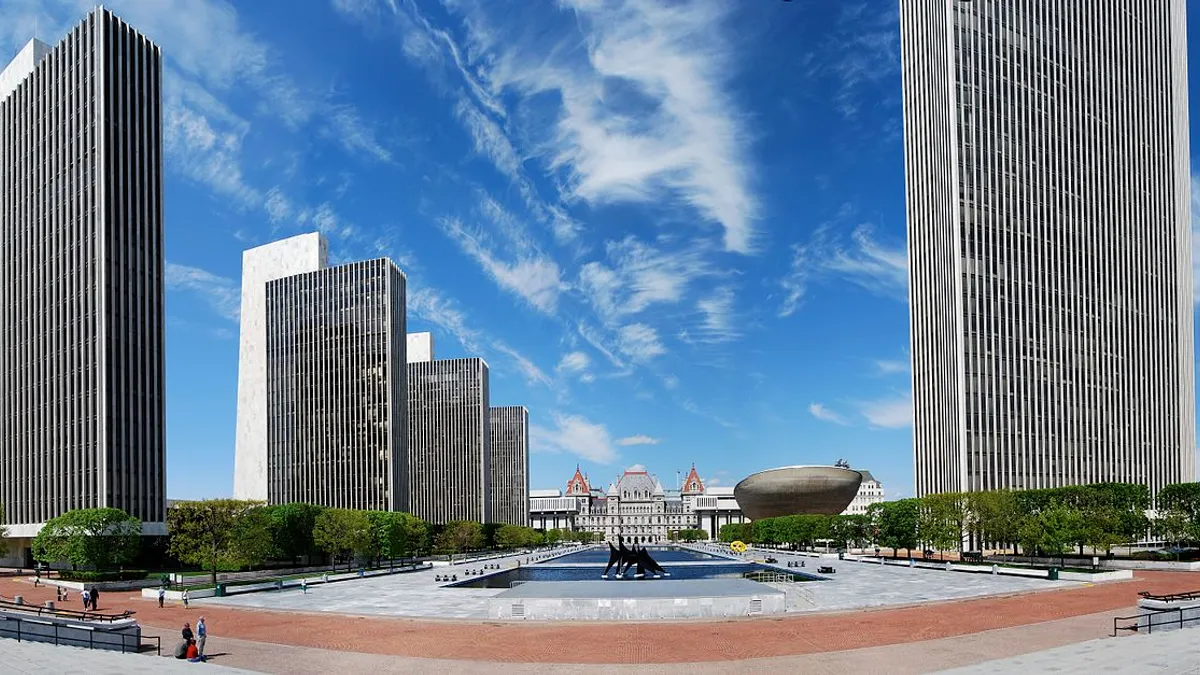Dive Brief:
- New York Gov. Andrew Cuomo announced last week that the state has selected three design-build teams to bid on a $750 million replacement for the Wadsworth Center Laboratory in Albany, New York. The public health lab project is expected to generate $2.3 billion in economic activity for the region.
- The three teams are AECOM Tishman and Skanska USA; Gilbane Building Co. and Turner Construction in association with HOK; and the joint venture of Pike Co. and McCarthy Building Co. Those companies submitting their qualifications for consideration but not shortlisted include Walsh Construction, Consigli Construction, Suffolk Construction and McKissack & McKissack.
- The Dormitory Authority of the State of New York (DASNY) — one of a select number of state agencies authorized to use the design-build delivery method — will oversee the design and construction of the new lab. "Building complex, 21st century infrastructure requires sophisticated delivery methods,” said Gerrard Bushell, president and CEO of DASNY. "Design-build will help us complete this vitally important facility on time, on budget, and as swiftly as possible.”
Dive Insight:
Cuomo has been pushing to expand the use of design-build on state projects, citing the method’s reputation for being able to speed up construction schedules and realize cost savings by allowing both design and construction to be delivered by a single entity. This, according to the method’s proponents, keeps change orders to a minimum, among other benefits.
There has been pushback against the use of design-build, however, reportedly on the part of some unions, aided by their lobbyists upstate, who argue that more design-build projects could mean less government oversight and a turning over to the design-build team of functions that are normally provided by public employees.
But the successes — both potential and realized — are hard to deny. The DASNY, for example, used design-build on the $24 million residence hall at The College at Brockport, State University of New York, and officials said it was an efficient way to deliver the 263-bed project. “With design-build, we were able to execute the project within a compressed time frame, keeping costs down while maintaining a high level of quality," Bushell said. "We look forward to executing similar projects like this one across the state.”
New York City will be looking for the same benefits on the $1.9 billion Brooklyn-Queens Expressway rehabilitation. The state allowed the city to use design-build for the project after reports pegged potential savings at about $300 million. In 2016, the Citizens Budget Commission said that New York City could save up to $2 billion in 10 years by using design-build for municipal bridge work.














